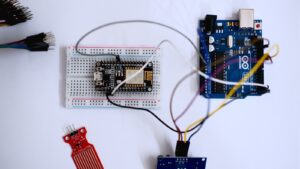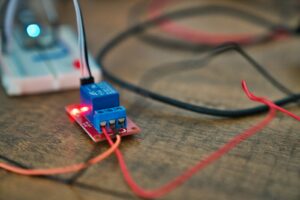Understanding the Exploitation of Vulnerabilities
The Incident: Exploitation of IoT-Based HVAC System Vulnerabilities
IoT-based HVAC system security breaches serve as a stark reminder of the vulnerabilities inherent in connected devices. In an increasingly interconnected world, building management systems in cities like Riyadh and Dubai are adopting IoT technologies to enhance efficiency and control. However, these advancements come with significant security risks, as demonstrated by a recent incident where a major security breach was facilitated through an IoT-based HVAC system.
In this case, the attackers exploited a vulnerability in the HVAC system’s firmware. The lack of regular updates and patches created a weak point that the attackers could easily penetrate. Once inside the HVAC system, they gained access to the broader building management network, including critical systems such as security cameras, access control systems, and even financial databases. This breach not only disrupted operations but also exposed sensitive data, leading to significant financial and reputational damage.
Such incidents highlight the critical need for robust security measures in IoT deployments. Without proper safeguards, IoT devices can become entry points for cyber attackers, compromising the entire network. In the context of smart cities and modern buildings, ensuring the security of IoT-based systems is paramount to protecting infrastructure and maintaining public trust.
Analyzing the Vulnerabilities
The breach of the IoT-based HVAC system revealed several critical vulnerabilities that could have been mitigated with better security practices. One of the primary issues was the use of default passwords, which made it easier for attackers to gain access. Additionally, the lack of encryption in data transmission allowed attackers to intercept and manipulate the data flows between the HVAC system and other connected devices.
Furthermore, the HVAC system was not isolated from other critical systems within the building management network. This lack of network segmentation meant that once the attackers breached the HVAC system, they could move laterally across the network, accessing other sensitive systems. This vulnerability underscores the importance of implementing strong network segmentation practices to contain potential breaches and limit the damage.
Another significant vulnerability was the absence of real-time monitoring and alert systems. The breach went undetected for an extended period, allowing the attackers to gather sensitive information and cause more extensive damage. Real-time monitoring could have detected unusual activity early, triggering alerts and enabling a swift response to mitigate the impact of the breach.
Lessons Learned for Building Management Systems
Implementing Strong Security Measures
The incident with the IoT-based HVAC system underscores the necessity of implementing robust security measures in building management systems. Businesses and facility managers in Saudi Arabia and the UAE must prioritize the security of their IoT deployments to prevent similar breaches. This begins with basic measures such as regularly updating and patching firmware to address known vulnerabilities.
Additionally, replacing default passwords with strong, unique credentials for each device is crucial. Implementing multi-factor authentication (MFA) adds an extra layer of security, making it more difficult for attackers to gain unauthorized access. In Dubai’s high-tech buildings, these practices are becoming standard, ensuring that IoT devices are protected against common attack vectors.
Encrypting data transmissions between IoT devices and building management systems is another critical measure. Encryption ensures that even if data is intercepted, it cannot be read or manipulated by attackers. In Riyadh’s smart buildings, using advanced encryption protocols is essential for safeguarding sensitive information and maintaining the integrity of the data.
Enhancing Network Security and Segmentation
Effective network security and segmentation are vital for protecting building management systems from IoT-related breaches. Isolating IoT devices from other critical systems can prevent attackers from moving laterally across the network if they manage to breach one device. This practice limits the potential damage and contains the breach, protecting other systems and sensitive data.
In Riyadh’s modern infrastructure projects, implementing strong firewall protections and intrusion detection systems (IDS) can enhance network security. These systems monitor network traffic for signs of suspicious activity and can automatically block potential threats. Regular network audits and vulnerability assessments can identify weaknesses and ensure that security measures are up-to-date and effective.
Additionally, adopting a zero-trust security model can further protect building management systems. This model assumes that every device, user, and network segment is potentially compromised and requires verification before granting access. In Dubai’s cutting-edge smart buildings, zero-trust security is becoming an integral part of the cybersecurity strategy, ensuring that only authorized entities can interact with critical systems.
Continuous Monitoring and Response Planning
Continuous monitoring and proactive response planning are essential components of a robust IoT security strategy. Real-time monitoring systems can detect anomalies and unusual activities, triggering alerts and enabling a rapid response to potential breaches. In Saudi Arabia’s rapidly evolving smart city initiatives, investing in advanced monitoring technologies is crucial for maintaining security and resilience.
Having a well-defined incident response plan is also critical. This plan should outline the steps to be taken in the event of a security breach, including containment, eradication, and recovery procedures. Regular drills and simulations can ensure that all stakeholders are prepared to respond effectively to security incidents. In Dubai’s tech-savvy business environment, businesses are increasingly adopting such plans to minimize the impact of breaches and ensure business continuity.
Furthermore, collaboration with cybersecurity experts and continuous training for staff can enhance the overall security posture. Executive coaching services can help leaders understand the importance of cybersecurity and foster a culture of vigilance and preparedness. By staying informed about the latest threats and security practices, businesses can protect their IoT deployments and maintain the trust of their stakeholders.
Conclusion
In conclusion, the exploitation of vulnerabilities in an IoT-based HVAC system leading to a security breach provides valuable lessons for enhancing the security of building management systems. For businesses in Saudi Arabia and the UAE, implementing strong security measures, enhancing network security, and ensuring continuous monitoring are essential steps. By learning from past incidents and adopting a proactive approach to IoT security, businesses can protect their critical infrastructure, maintain operational integrity, and achieve long-term success in the digital age.
—
#IoTSecurity, #HVACSystems, #SecurityBreach, #SmartTechnology, #BuildingManagement, #SaudiArabia, #UAE, #Riyadh, #Dubai, #AI, #Blockchain, #Metaverse, #ExecutiveCoaching, #GenerativeAI, #Leadership, #Management, #ProjectManagement













